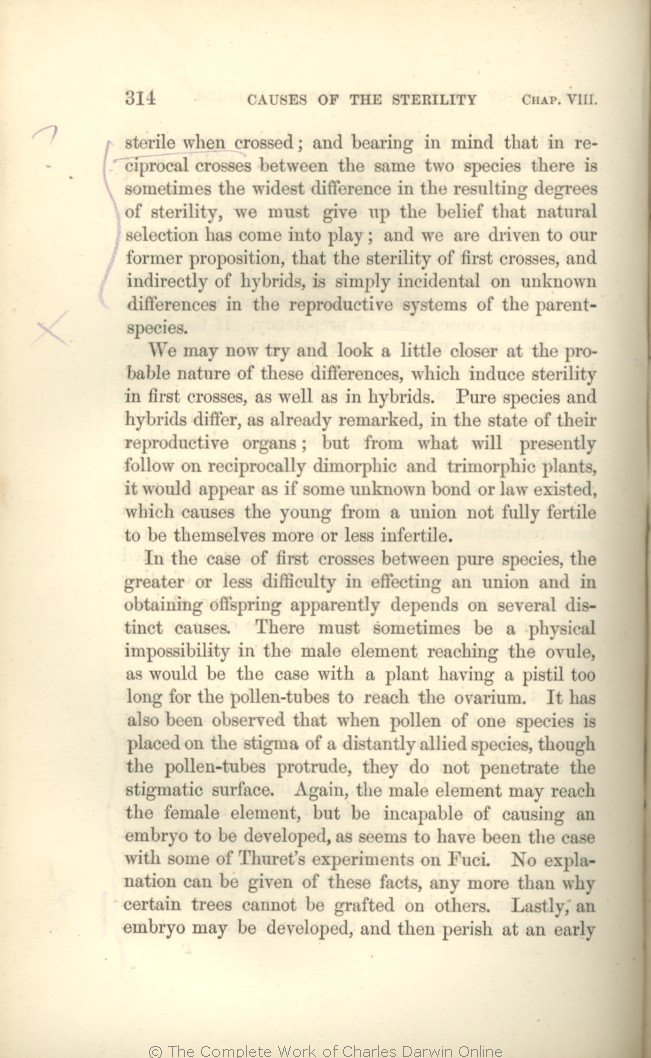sterile | sterile 1866 | | generally sterile 1869 |
| the resulting degrees of 1866 |
| their 1869 |
| and we are 1866 |
| We are thus 1869 |
| that 1866 | | namely, that 1869 |
|
|
We may now try and look a little closer at the probable nature of these differences, which induce sterility in first
crosses, | crosses, 1866 | | crosses 1869 |
| 1 blocks not present in 1859 1860 1861 1866 1869; present in 1872 | | We will now look a little closer at the probable nature of the differences between species which induce sterility in first crosses and in hybrids.
|
|
In the case of first
crosses | crosses 1866 1869 | | crosses, 1872 |
| between pure species, 1866 1869 |
| OMIT 1872 |
| pollen 1866 1869 | | the pollen 1872 |
| element, 1866 1869 | | element 1872 |
| Thuret's 1866 1872 | | Thurets 1869 |
| explanation 1866 1872 | | expla- nation 1869 |
|









